Some winners of Home of the Year have divided viewers of the RTÉ series, but this year’s winner, a coach house complete with kick marks from the hooves of earlier occupants, is a more genteel champion, pipping edgier architectural contestants to the post.
Although the former stables harks back to the 1830s, it channels the vogue for nostalgia and for abodes that feel as well as look like homes. Ambience was its secret ingredient. “It was probably the most charming house I have ever been in,” explains one of the three judges on the show, Peter Cowley of PAC Studio. “The courtyard, a perfect quadrangle, is like something out of an Enid Blyton novel.”
'This property was gracious and lovely – the very built manifestation of the lady living there,' according to Home of the Year judge Peter Cowley
What made it special, he says, was that the home had taken on the characteristics of its owner. “This property was gracious and lovely – the very built manifestation of the lady living there.”
The lady of the house, Ethna Dorman, raised her blended family here with her late husband, William, who made some of the furniture in the property after he lost his job as director of compliance at Merrill Lynch in the recession of the late 1980s.
During that time he took to using his hands, built an extension on their US home and showed real cabinet-making skills with the applewood dresser and the dining table at which sits a Windsor chair and companions. But it is the wooden heart, carved with the words “I love you”, a coaster that sits on her bedside locker and upon which she sets her morning cup of tea, that is her most prized possession.
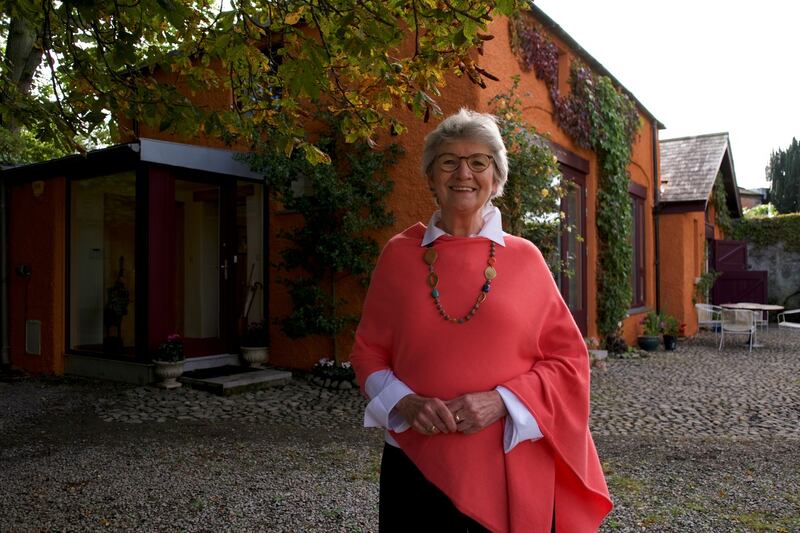
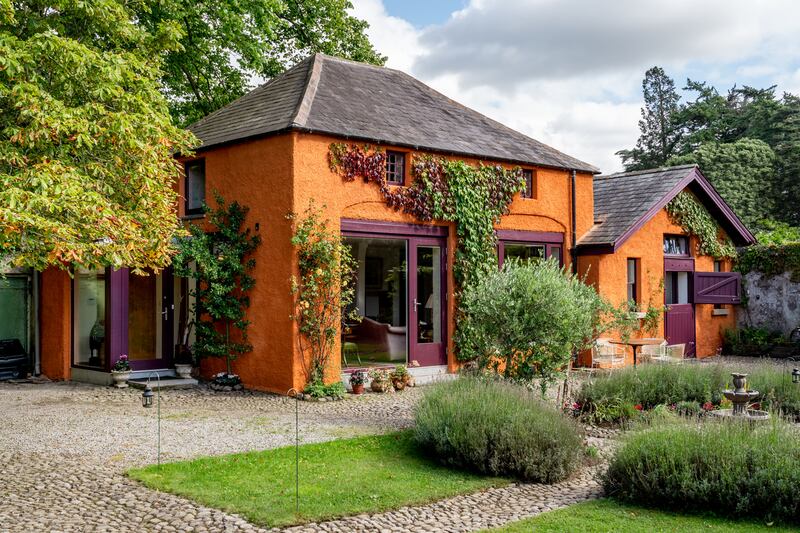
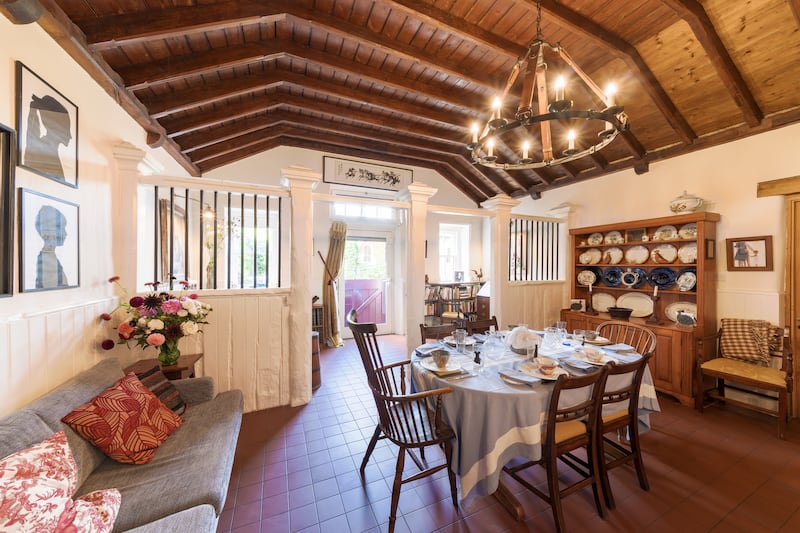
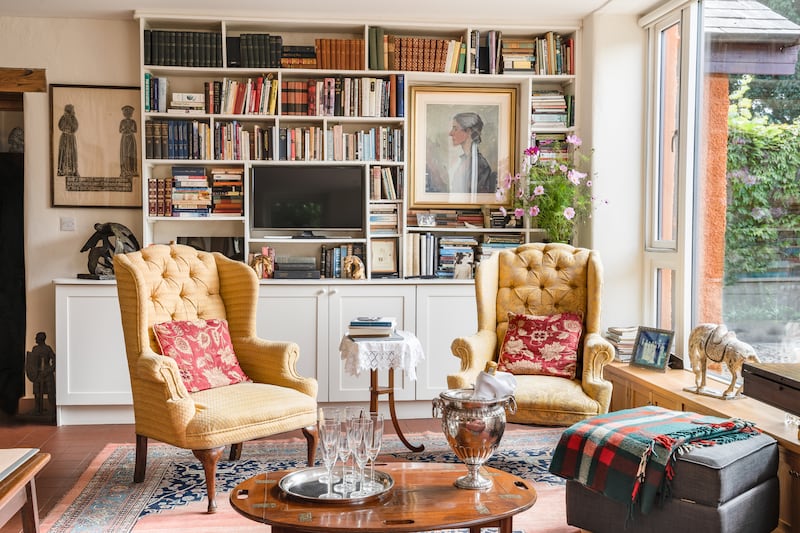
Cowley found the downstairs, comprising the coach house and adjoining two-stall stable, to be very faithful to the original building, while upstairs the two bedrooms in the hayloft took a more modern approach.
Ethna, who is originally from Roscommon, and William had moved back to Ireland in 1994, and were living in a Georgian house in Tipperary when she started to look for a new school for the children, choosing John Scottus, the multidenominational college in Dublin named after the Platonist philosopher, theologian and poet, for its teaching principles. The family moved to the capital the following year; Dorman, who had started to house hunt, mentioned her quest to another parent at the school.
The stained beams of the vaulted ceiling of the former coach house are original, but the doors have been replaced with large windows that frame the views of the clock tower and the rest of the yard
“I was looking at buying a different courtyard and afraid of making a mistake,” she says. Neil McDermott had recently acquired the old Shackleton estate in west Dublin, including the gardens planted by the plantsman David Shackleton, currently being refurbished by Fingal County Council, and its coach yard. “He said, ‘I’ll sell you mine.’” She bought it off-market.
The conservation architect Michael Kavanagh, of MVK Architects, was brought on board, and it was he who determined the original colour of the yard’s limewashed walls, truffling out a specimen from under the eaves. He then contacted the Traditional Lime Company, in Co Carlow, to match the colour to the original, one of 24 colours that has been used for centuries, he explains.
The stained beams of the vaulted ceiling of the coach-house part are original, but the original doors have been replaced with large windows that frame the views of the clock tower and of the rest of the yard, with its river-stone cobble and mature trees from which hang Chinese lanterns that her son Liam found in a skip and had wired for electricity for his wedding. They haven’t come down since.
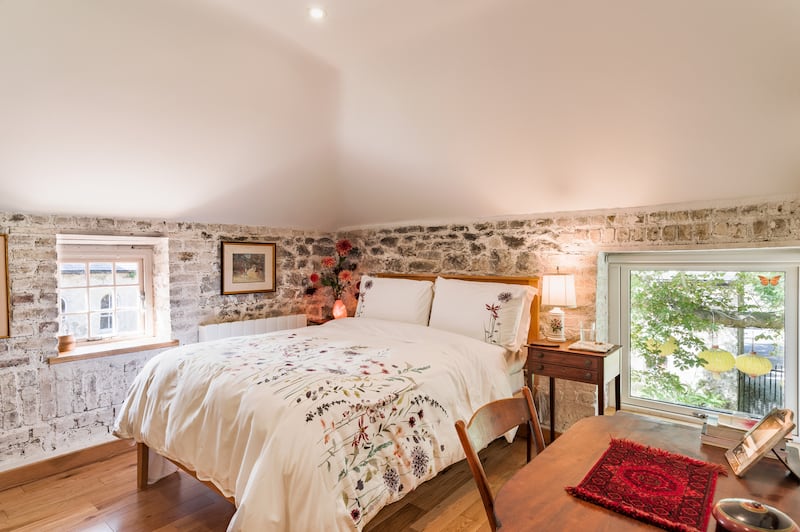
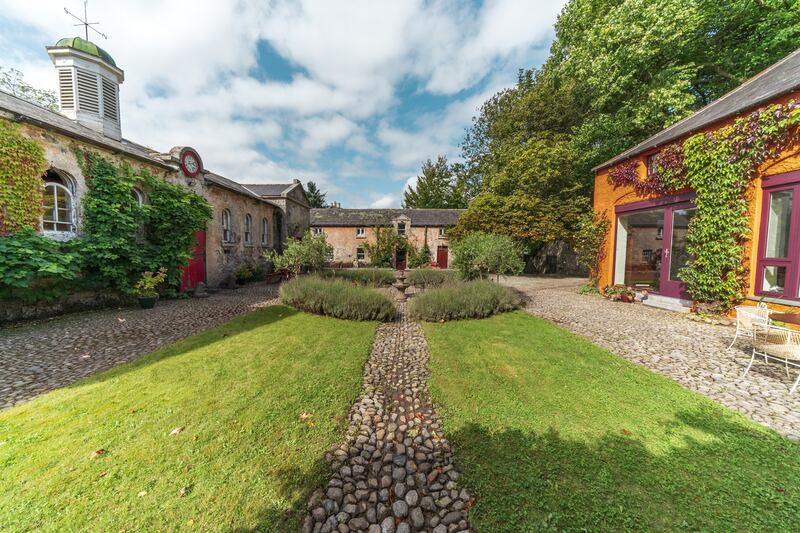
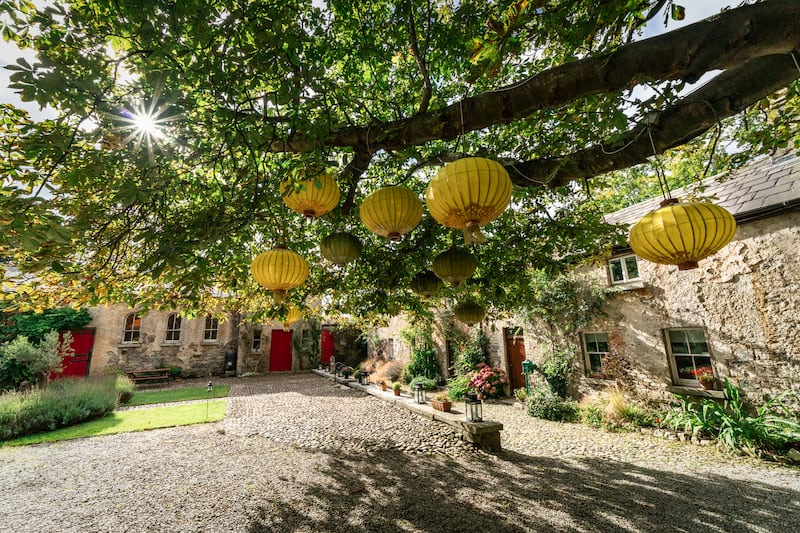
Keeping the kick marks on the stable dividers was also Kavanagh’s idea, she says. “I would have sanded them down, to make it look nice and housey,” she admits. But if she’d done that there would be no story to tell. Kavanagh also peeled back all the layers of paint on the original coach-house doors, to find out what colour they had been, and teamed the spicy ochre exterior with the nearest thing he could find, Farrow & Ball’s Brinjal, a deep aubergine.
Inside, the walls are painted an apple white. In one corner of the livingroom a pair of wingback chairs, reupholstered in a fabric Dorman brought back from China, sit in front of a set of bookshelves. She had them designed around the painting that came from William’s old house in Princeton, New Jersey, using a joiner she found on Tradesman.ie.
The Victorian-style silhouettes that hang on one of the kitchen walls are of her five children: Kim, Venetia, Dominique, Liam and Lydia.
So what prompted her to enter the competition? It was a call from the production company Shinawil, asking if she would consider taking part, that prompted her to discuss the idea with her family. She lets two of the adjoining cottages on long-term leases and also rents out her own home when she travels to the United States to visit her grandchildren. “I didn’t believe I’d have a chance in a million,” she says.



















